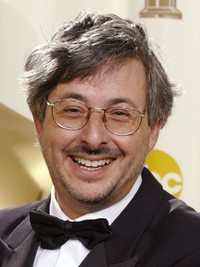Andrew Lesnie

In 2001, American audiences delighted in a new, breathtaking journey inside the imagination of J. R. R. Tolkien. Armed with the responsibility of bringing to life the vast landscapes of the author's fantasy world was Andrew Lesnie, director of photography on "The Lord of the Rings: The Fellowship of the Ring" (2001), "The Lord of the Rings: The Two Towers" (2002), and "The Lord of the Rings: Return of the King" (2003). Although these explorations of Middle-earth were hardly among Lesnie's earliest endeavors in cinematography, his work on the Peter Jackson-directed adaptations helped Lesnie to ascend to a plateau of rich cinematic esteem. Andrew Lesnie was born on January 1, 1956, in Sydney, New South Wales, Australia. He studied at Sydney TAFE college and then the Australian Film, Television and Radio School. While enrolled at the latter institute, Lesnie earned employment as camera assistant on the Richard Franklin horror picture "Patrick" (1978). He upped his responsibilities when he took a job on the television program "Simon Townsend's Wonder World!" (Network Ten 1979-1988), where Lesnie enjoyed ample creative control. After the first two years of production, Lesnie graduated to a career of big screen work. "Mad Max 2: The Road Warrior" (1981) was among the first major features to which Lesnie contributed footage; the gig earned him a rapport with writer and director George Miller that would result in additional contributions down the line, the next o being on the miniseries "Bodyline" (Network Ten 1984). The years to come saw Lesnie work on features including "Unfinished Business" (1985), "Dead End Drive-In" (1986), "Dark Age" (1987), "Incident at Raven's Gate" (1988), "The 13th Floor" (1988), and "Farewell to the King" (1988). Lesnie reunited with Miller for a groundbreaking project that would earn him in-industry stardom, "Babe" (1995). The unprecedented artistry with which Lesnie and his team catered the film's aesthetic to the fantastical realism intrinsic to a story about talking animals cemented the cinematographer as a figure worthy of attention. It was, in fact, Lesnie's work on "Babe" and its sequel "Babe: Pig in the City" (1998) that earned him the eye of filmmaker Peter Jackson. Jackson hired Lesnie to shoot "The Lord of the Rings: The Fellowship of the Ring" (2001), earning Lesnie an Academy Award for Best Cinematography and incepting a partnership that would last through and beyond the Tolkien trilogy. After shooting both "The Lord of the Rings: The Two Towers" (2002), "The Lord of the Rings: The Return of the King" (2003), and Jackson's "King Kong" (2005), Lesnie found work on other high-profile blockbusters, including "I Am Legend" (2007), "The Last Airbender" (2010), and "Rise of the Planet of the Apes" (2011). Lesnie returned to Middle-earth for Jackson's "The Hobbit: An Unexpected Journey" (2012), and its follow-ups, "The Hobbit: The Desolation of Smaug" (2013) and "The Hobbit: The Battle of Five Armies" (2014). The final film to which Lesnie lent his talent was the war drama "The Water Diviner" (2014), the feature directorial debut of actor Russell Crowe. On April 27, 2015, Lesnie died suddenly of a heart attack in his home on the north coast of Sydney, Australia. Lesnie was survived by his partner Bronwen and their sons Jack and Sam.